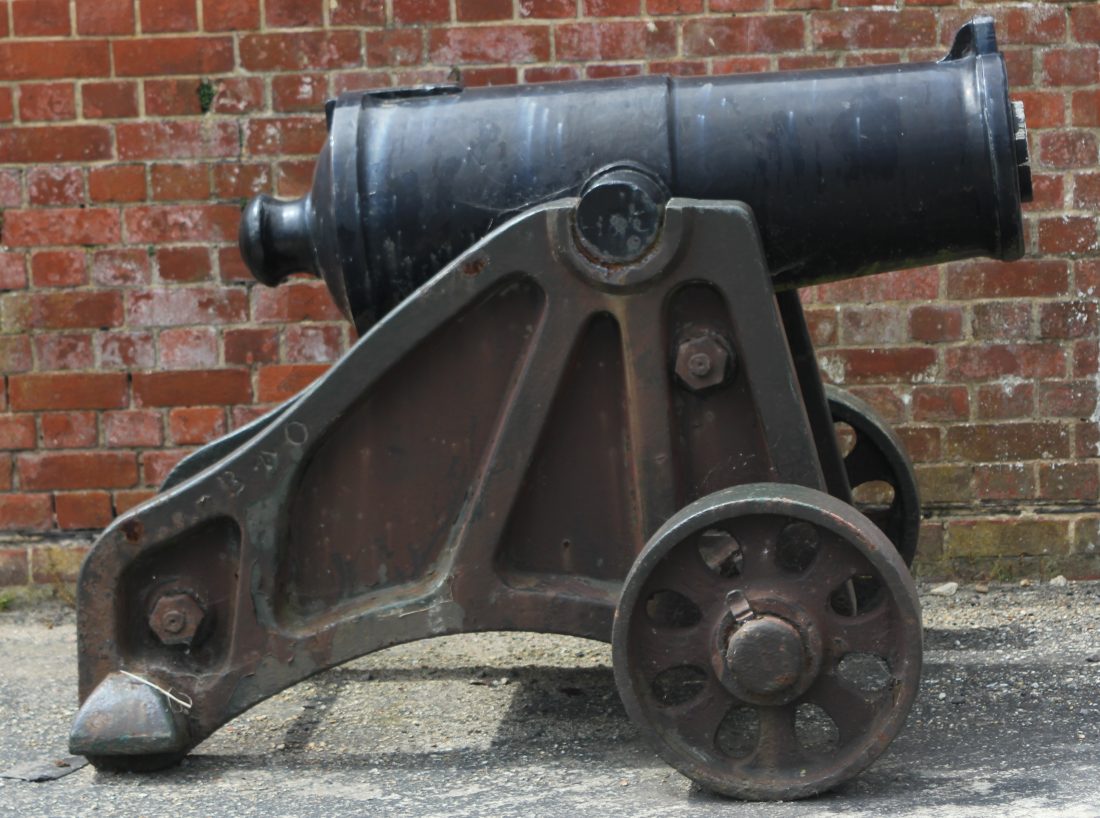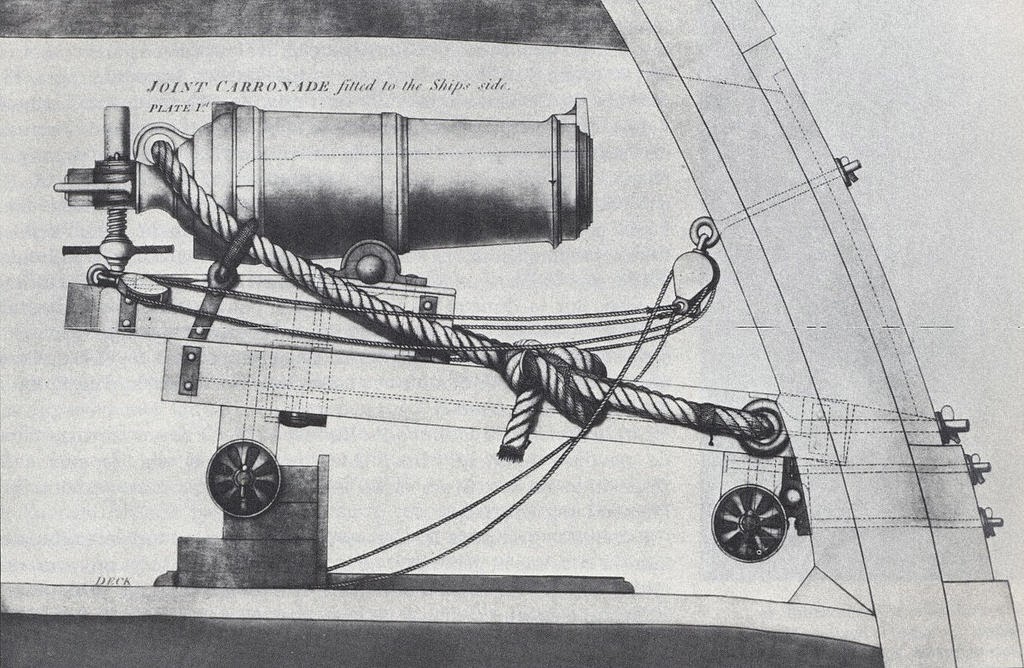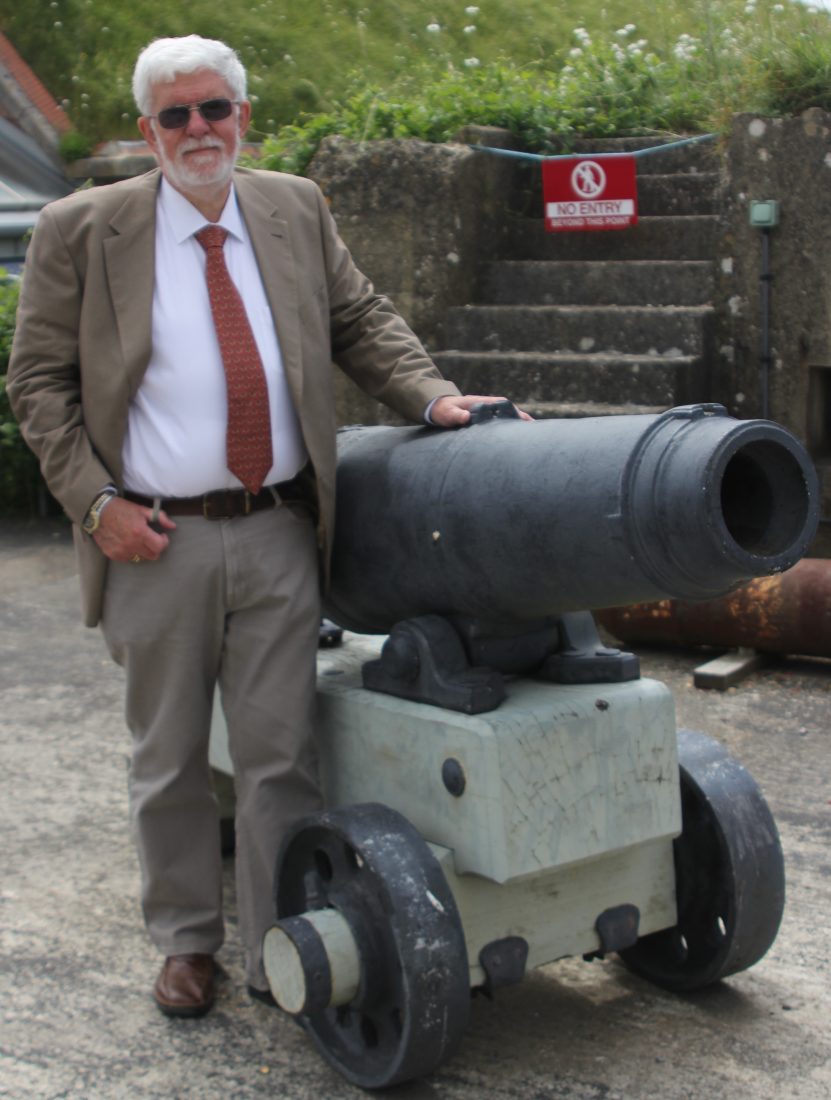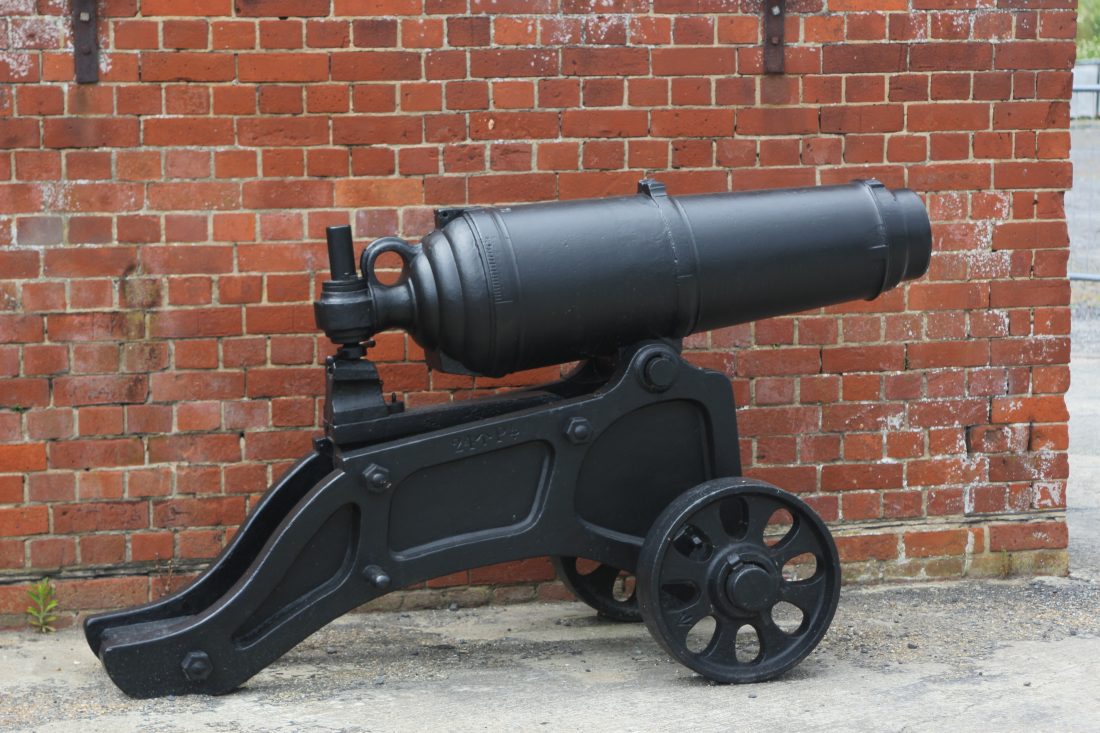Touching Jack Aubrey’s reality: Carronades at Britain’s Fort Nelson Museum
“… Captain Aubrey stood by the starboard thirty-two-pounder carronade contemplating the Emperor of Morocco’s purple galley as it lay off Jumper’s Bastion with the vast grey and tawny Rock of Gibraltar soaring behind it, while Mr Blake, once a puny member of his midshipman’s berth but now a tall, stout lieutenant almost as massive as his former captain, explained the new carriage he had invented, a carriage that should enable carronades to fire twice as fast, with no fear of oversetting, twice as far, and with perfect accuracy, thus virtually putting an end to war.”
The above extract from the opening of O’Brian’s “The Far Side of the World” concentrates on a weapon, the carronade, which figures significantly – and frequently decisively – in much nautical fiction, as it did in real life.

British 68-pounder carronade of 1780 on a fortress mounting
The “carronade”, an early, perhaps earliest, example of a trade-name becoming the accepted term for an entire class of products, was a short smoothbore cast iron cannon. It took its name from the original manufacturer, the Carron Company, which had an ironworks in Falkirk, in Scotland, UK. The short barrel indicated that it was a short-range weapon, powerful against ships but even more so against personnel in close actions. A carronade weighed a quarter as much and used a quarter to a third of the gunpowder-charge for a long gun firing the same roundshot. The lower recoil forces meant that slider mountings, rather trucks, could be employed. The light weight of the carronade made it especially attractive for mounting at higher levels – and important factor when a enemy’s deck should be cleared by grapeshot before boarding. They could also provide a very powerful punch for a small vessel such as a gunboat or sloop.

A carronade on a shipboard mounding – note the slide
Though the basic concept remained unchanged, carronades were manufactured for a huge range, from 6 to 42-pounders, and 68-pounder weapons not unknown. They were not counted in a ship of the line’s rated number of guns so that, in practice, the actual number of weapons carried might be significantly higher than the rating.

Antoine Vanner with 1808 24-pounder
Three cannonades are on display at the Royal Armouries Museum at Fort Nelson, near Portsmouth (UK). All are on fortress-mountings, for protection of walls and bastions of land fortifications against storming but the weapons are otherwise similar to what would have been deployed at sea. The largest is a 68-pounder, dated to 1790, while the two smaller weapons are 28-pouunders and dated as 1808.
Touching them forges a bond between the visitor and the world of fighting sail.

24-pounder carronade of 1808, fortress mounting
Do you read on Kindle?
Do you enjoy naval fiction?
Note that if you are an Amazon Prime subscriber you can borrow any one of the six Dawlish Chronicles novels, free each month. The novels are also available for purchase on Kindle. If you’re a Kindle Unlimited subscriber you can read any, at any time, without further charge.
Click on the image below for more details
Registering for the Dawlish Chronicles mailing list by clicking above, or on the banner below, will keep you updated on new books and facilitates e-mail contact between Antoine Vanner and his readers for discussion of issues arising.
Suggestions and constructive comment are always welcome and all emails are replied to. Free short stories, available only to those on the list, are also made available at intervals.



